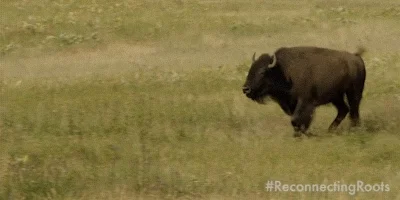I am not an expert on either guns or varmints, but I’m pretty sure that if you need anything more than a .22 rook rifle to take care of prairie dogs, the only possible reason is because the prairie dogs are armed and shooting back.
My understanding is that it’s substantially about convenience in aiming rather than up-armored varmints: .223 has roughly twice the velocity of .22; which means a flatter trajectory and less need to compensate for drop if the varmints are observant enough that you can’t get as close as you might like.
Prairie dogs won’t let you get close before they go into their holes. So a minimum you will need to be 100 yards away. 200-400 yards is more likely (and can be even longer). So in general, unless you are <~100yrds .22lr doesn’t have the range. Something faster with a more aerodynamic bullet like a .22-250 or .223 Rem is the most commonly used type of round for them. For the longer ranges, things like 6 or 6.5mm Creedmore, or .308.
What legitimate reason is there to shoot prairie dogs? You can’t eat them. They are known to carry the black death. Other methods of control would be more effective if prairie dog invasion of property is an issue. Killing them for funsies?

Such as? People do poison them, but if you have eagles around you can’t do that so you don’t end up poisoning the eagles. Or hawks (though they aren’t generally protected species.) Traps can kill them as well and often used in conjunction with culling them. But their populations can be massive.
Prairie Dogs are rodents and they multiply quickly. Just like any rodent population, too many and they become a problem. It is little different than one catching and killing rats or mice in their house - or squirrels in the attic.
And unless the prairie dogs are possessed by an alien intelligence and decide to invade your farm en masse, that AR-15 isn’t going to be any more useful there than some effective traps.
Except few homeowners insist they need weapons of war to deal with the mice.
2 members of my family are fire arms instructors. One recently retired from the army. The other an avid target and trap shooter and fire arms collector.
Many, many other members of my family are hunters, my father, grandfather, aunts, uncles and brothers are all veterans.
No one owns an AR or any other assault rifle. And there are very few handguns in the situation.
And yet there are tons of smaller more appropriate rounds designed to do exactly this, rather than to eradicate people. An AR15 and .223 is only a common choice because it’s 1) popular 2) the ammo is cheap and commonly available (because they’re popular).
That is not a need, and the popular cache isn’t down to prairie dogs anymore than it is to 30-50 pigs.
Big clusters of burrows rip up fields and can create a dangerous trip hazard for people and live stock. They can also pass disease on to livestock, and not just plague.
Because you aren’t trying to eradicate them. Just move or shrink the colony. Shooting, noise makers and traps are the go to. That kind of pest culling is common, and doesn’t require an assault rifle.
My grandfather did this sort sort of shit just fine with a bolt action in tiny little .22lr. So do people the world over.
This is something farmers and ranchers do. In specific seasons and places. It’s in no way a justification for Walmart to be selling military grade weapons to teens in the suburbs.
Which makes shooting them one by one an expensive and useless endeavour. At least traps, unlike bullets, can be reused. A cursory search of the internet shows exclusion methods appear to be the most effective.
Like shooting rats in a city. Not an effective population control for a species that can breed quickly.
So yes. The answer is people shoot prairie dogs for fun
That makes a little more sense if the goal is getting them to go elsewhere.
We are in complete agreement.
Yeah it’s a spot treatment. Properly speaking. Any kind of culling pest animals by shooting is.
You’re not going to impact the total population, or solve shit long term. But shoot a bunch and you might move that one group off the back field right now.
It just comes up in this context because they’re mining for something practical sounding, and most people don’t understand it.
A cull with a group of people will get rid of a lot more in a day vs traps. What would be a one day cull could take weeks of setting and checking traps for the same result: dead prairie dogs. It’s almost like the people who actually live in rural areas know what works best for managing their land.
To be honest, a lot of them would rather poison them, as that is the fastest way to kill the largest number. But like I said, eagles (and other birds of prey) do prey on them and you don’t want to poison eagles.
Like I said in the previous thread: You can use other rifles to cull prairie dogs. A lot of people use bolt actions with high powered scopes and much zippier ammo than the .223 because of the distances involved.
If they do use an AR style weapon, they are set up for long range, with longer, heavier barrels and scopes. They are set up to be more accurate than your average rifle, maybe even chambered in something like the .224 Valkyrie which has more range.
But now you have people chiming in that 1) “You really only need a .22lr.” or 2) “There isn’t any reason to shoot prairie dogs.” Both come from someone who has never talked to someone who has too many prairie dogs on their land.
Here is the thing - two things can be true. The AR can be derivative and nearly the same capabilities as a “weapon of war” (which is true of most firearms) - and they can be used for other purposes, such as pest/varmint control/hunting (and shooting sports).
IMO, instead of focusing on opinions that 1) You don’t really need xyz to do something or , 2) you should use abc instead - all of which are opinions and personal preferences - just acknowledge it and then counter it. “Yes, it is true some people use them for these purposes, their potential for use is too great IMO for unrestricted private ownership.”
Conversely, saying they are “only” good for varmint control or the like, isn’t really an honest talking point either.
See, I don’t think focusing on the ammo is especially useful. The .223/5.56mm round is not remarkable in any way. It was a compromise. They were shifting military doctrine away from a .30 cal battle rifle that can engage targets 800+ yards away, with a lighter round that allowed one to carry more ammo for the same weight and hit targets at 400+ yards away. The after action reports in the Middle East had people complaining about its capabilities, especially when trying to engage targets out past 600 yards. This is why the Army just adopted the 6.8mm/.277 Fury which is going to be heavier and about as fast with a lot more muzzle energy.
So in the grand scheme of things, .223 is one of the smaller rifle rounds there are. Like I said .22-250 is popular for varmints because even though it shoots the same size of bullet, it has a lot more powder behind, making it faster and shoot flatter.
You’re absolutely right part of the reason for the popularity is its use and availability makes it both cheaper and plentiful. You could say that about .30-06, .30-30, .308, and other rounds that have stood the test of time and you can find a ton of rifles chambered in them. But any other similar round that would do the job the .223 does isn’t any less lethal. Many of them would be more lethal due to more muzzle energy.
And as I said above, acknowledgement of other uses doesn’t mean ones opinion can’t be that the AR platform and other semi-automatic removable magazine fed rifles have too much potential abuse.
FYI - they stopped selling ARs after I think Sandy Hook.
My dad was hired by a junk yard to shoot rats when he was young. But that was a different time.
Anyway, I’ll let you find a farmer/rancher with prairie dogs and you guys can come up with the best plan to control them.
We don’t need list of stats and military history, and I already well understand all of this. As you well know because we have discussed it before, and this is a pretty stock response for you.
It is the “compromise” you are talking about that makes these rifles so problematic. As the entire theory is to kill or disable humans with a round too small to do that by putting more than one bullet into them. The combo of the rifle and intermediate cartridge allow high volumes of accurate fire.
When you talk about culling prairie dogs or 30-50 hogs on a play ground. You are effectively arguing for the dynamic of a mass shooting being necessary down to a niche use where it sometimes works that way.
The gun industry has a problem arguing for practical uses for these things. Because proper hunting revolves around humane one shot kills. A rifle that excels only at multiple shots doesn’t fit. The preferred ammo for these things is too small, and often banned, for hunting medium game on up because it can’t reliable kill humanely. And it’s bad for hunting small and varmint class game when you want meat or pelts because it’s too big and destructive.
So pest culling is the one place anyone who knows what they’re doing uses it. But like I said, you do not need a gas operated, semi-automatic, magazine fed rifle in that large a cartridge to do that. We have published numbers of prairie dog culls from the black powder area demonstrating that. People do analogous things plenty fine all over the world without ARs and Mini-14s.
So it’s not an argument for access, it’s not a need. It’s not the reason they’re around or popular.
. But any other similar round that would do the job the .223 does isn’t any less lethal. Many of them would be more lethal due to more muzzle energy.
Of killing prairie dogs?
People did that just fine for a century with .22lr. Shit like 17. Hornet, .22 Hornet, and .22 WMR exist specifically for target shooting and varmint hunting at longer ranges and in higher wind than .22lr. They have more powder than .22lr and a bigger, often pointed bullet. But are much smaller than a .223 and it’s related intermediate cartridges.
They were much more popular in the past, for exactly this sort of thing than .223. And remain far more appropriate for small and varmint game hunting.
This is not a need. And people are not using .223 on prarie dogs and pigs because it’s the most appropriate. Spot checking prices the smaller rounds are a bit cheaper too.
I know it’s almost like I was talking about a general dynamic rather than making a specific accusation against Walmart.
Are these prairie dogs rushing your farm en masse? Because the thing about burrowing creatures, especially social ones, is they don’t spend a lot of time out on the surface in large numbers to make gunning them down with a high powered semi auto rifle and 15-30 round magazine worth your while.
People who actually live in rural areas aren’t always so great about managing their land and will engage in destructive activity for short term goals
People buy assault rifles because they look cool, not because they have a legitimate civilian use. If they are taken off the market, so much the better. There are more reasonable alternatives.
Plenty of wildly inappropriate firearms are marked for “farm use”. The Thompson submachine gun was originally marketed for rural markets. The “drive-by” was invented using them.
But it has 5x the velocity of a .22 rimfire round despite similarity in size. Making it far more deadly, longer ranged and hugely damaging to living tissue as it tumbles around.(F =M x A)
Prairie dogs are pests because their burrows are extensive; and make the surface unstable. Heavier livestock (cattle, horses, sheep) will often break their legs in prairie dog colonies, not just falling into a burrow entrance, but punching a hole through the ceiling of a burrow, as their hooves concentrate their weight in a smaller area. Livestock with a broken leg will need to be euthanized if it doesn’t die of shock, infection/sepsis or starvation first, resulting in a loss that can run into the thousands.
So, while, they aren’t invading people’s homes, but they can be problematic to people’s livelihoods.
This doesn’t mean shooting them, regardless the weapon or bullet caliber, is the best solution. I wonder if using drones set to an automatic flight pattern, launched at random intervals to harass them would be more effective. I do something like this to chase squirrels away from my garden, and my work has experimented with this in some of our programs in Africa.
Of course, the prairie dogs where here first, and do have a benefit for the land. Figuring out how to coexist with them in a mutually beneficial manner would be the best solution, though I don’t have a ready solution.

Coexisting in a mutually beneficial manner is not something with which Republicans are familiar.
Bison don’t have that problem and coexist with groundhogs.
They also don’t overgraze unless forced to.

Seriously, how big of an issue are prairie dogs? How many people are affected by the scourge of prairie dogs? Because it seems weird to me that prairie dog control is being discussed in the context of assault rifles here.
